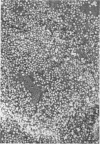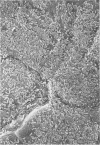Abstract
Fourteen tissue sites from the bovine reticulo-rumen were examined by scanning electron microscopy to determine the distribution patterns of bacterial populations adhering to the epithelium. Although diet variations did not appear to influence the total number of tissue-adherent bacteria present in adult Herefords, diet affected their distribution. It appeared that the distribution of the bacterial populations may be directly affected by the physical state of the digesta. The digesta may be mechanically removing adherent bacteria from the tissue surface by abrasive action. The total adherent population consisted of subpopulations with separate distribution patterns, and macropopulations of morphologically similar bacteria were occasionally observed at specific sites on the epithelial surface. Ureolytic organisms on the epithelium followed a distribution pattern considerably different from the general bacterial distribution.
Full text
PDF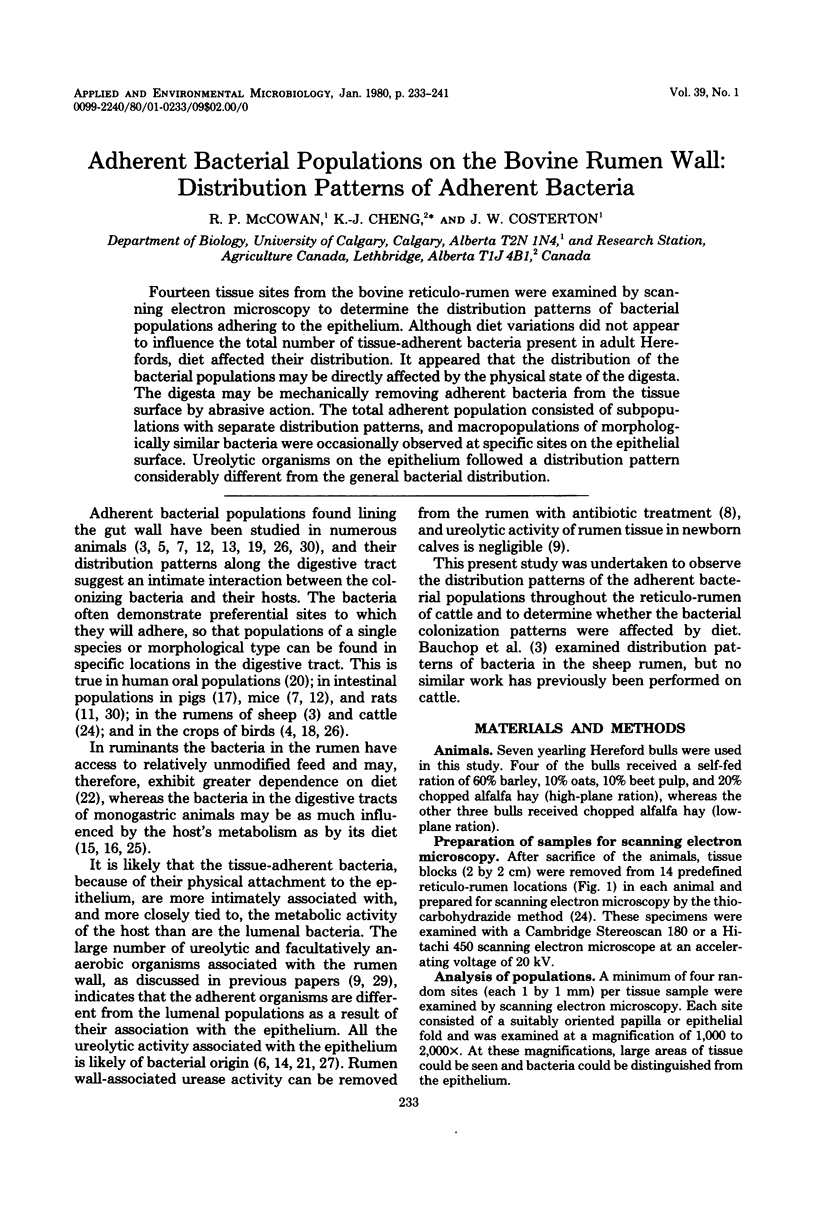
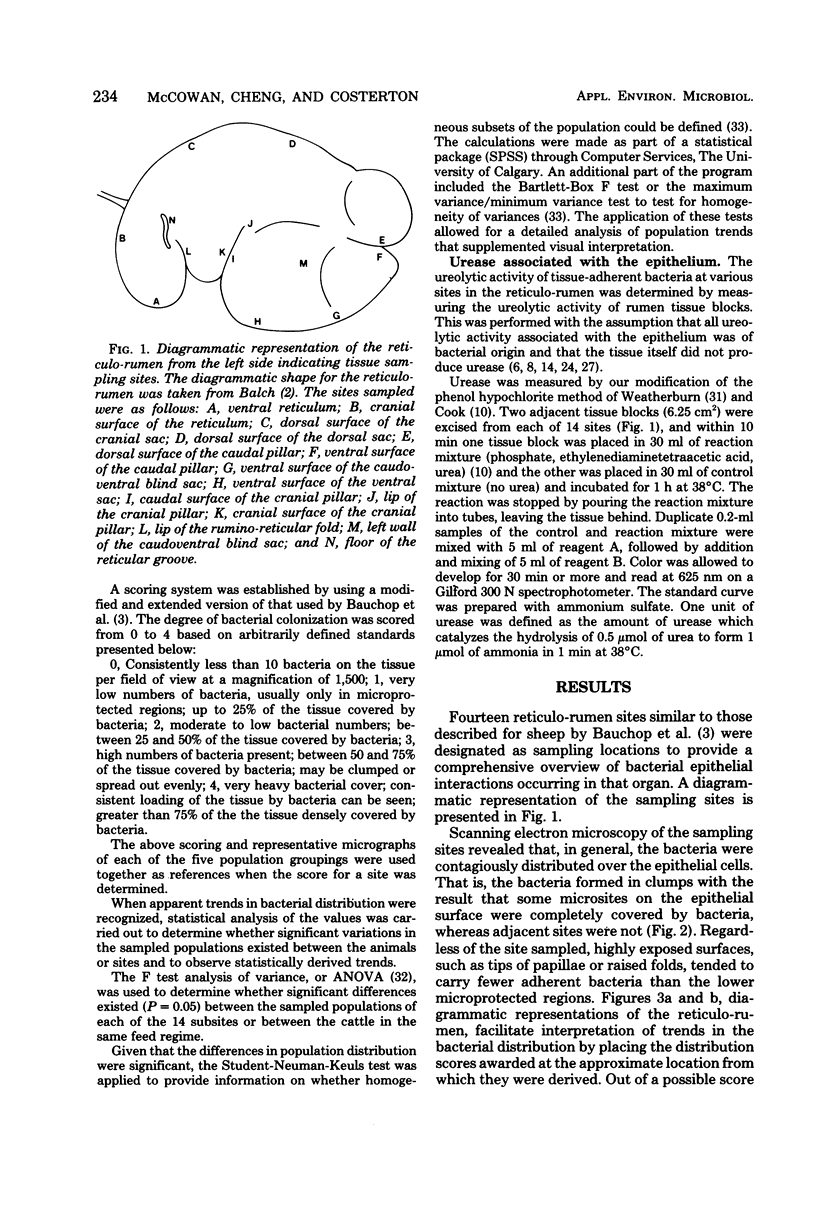
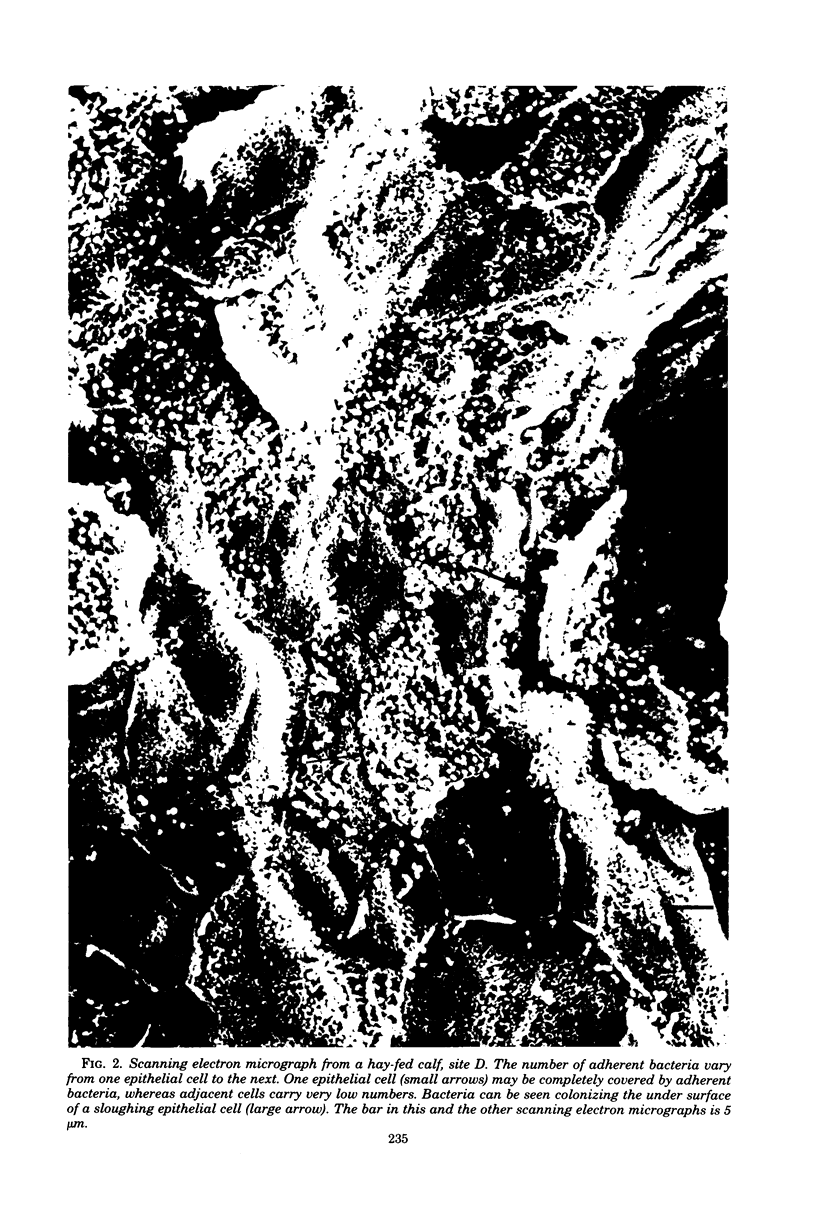
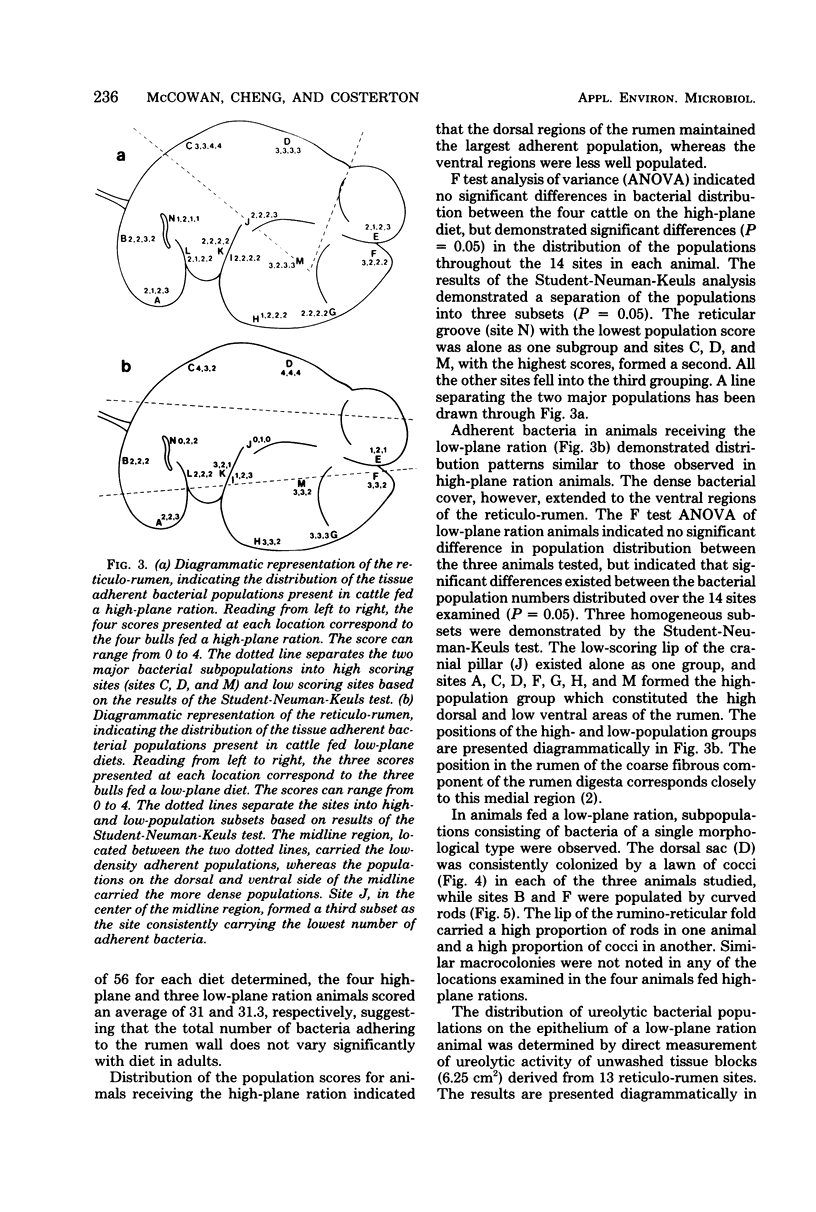
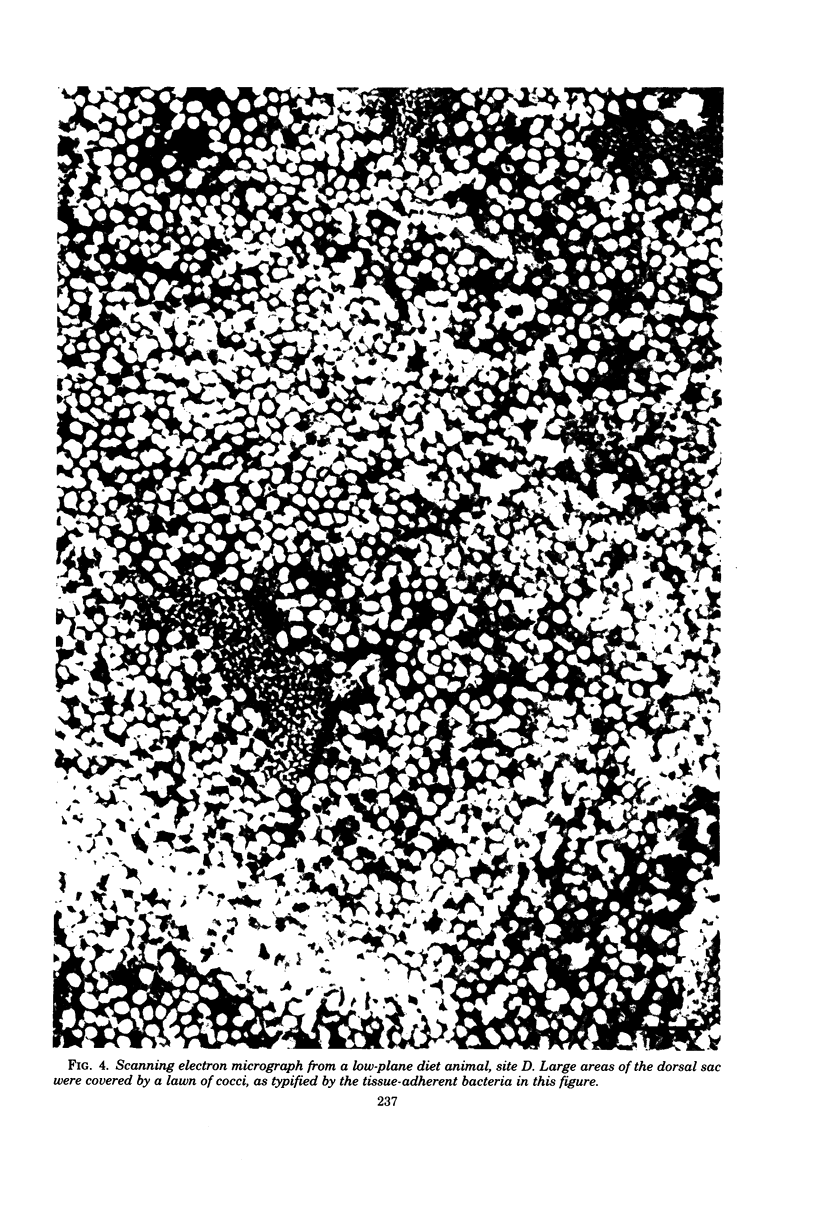
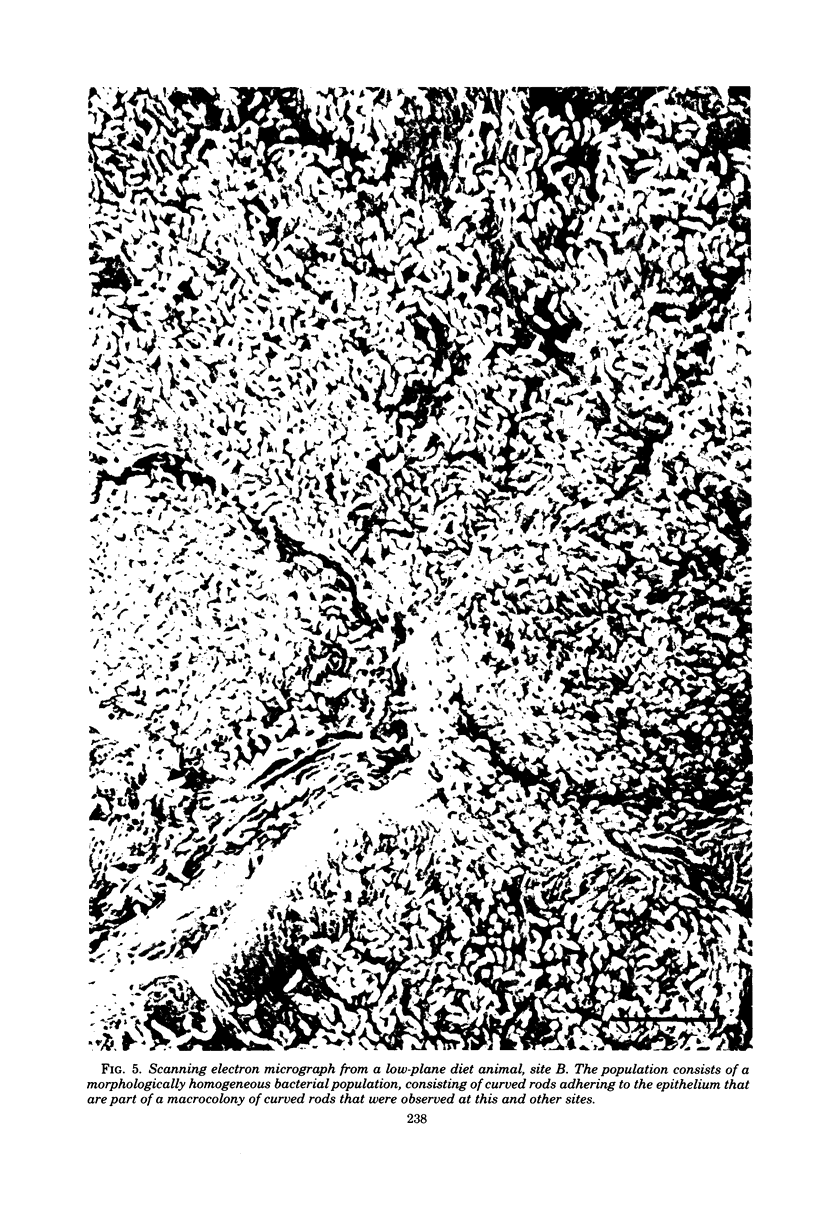
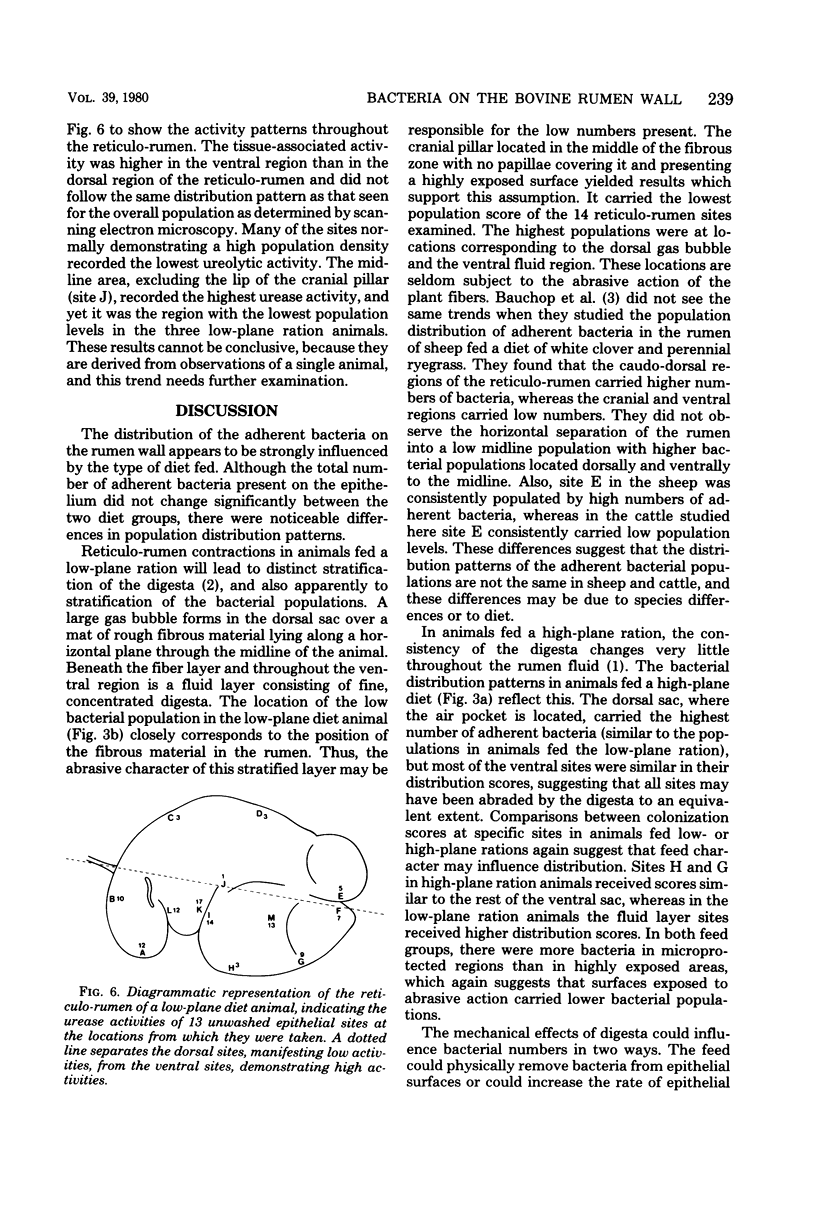
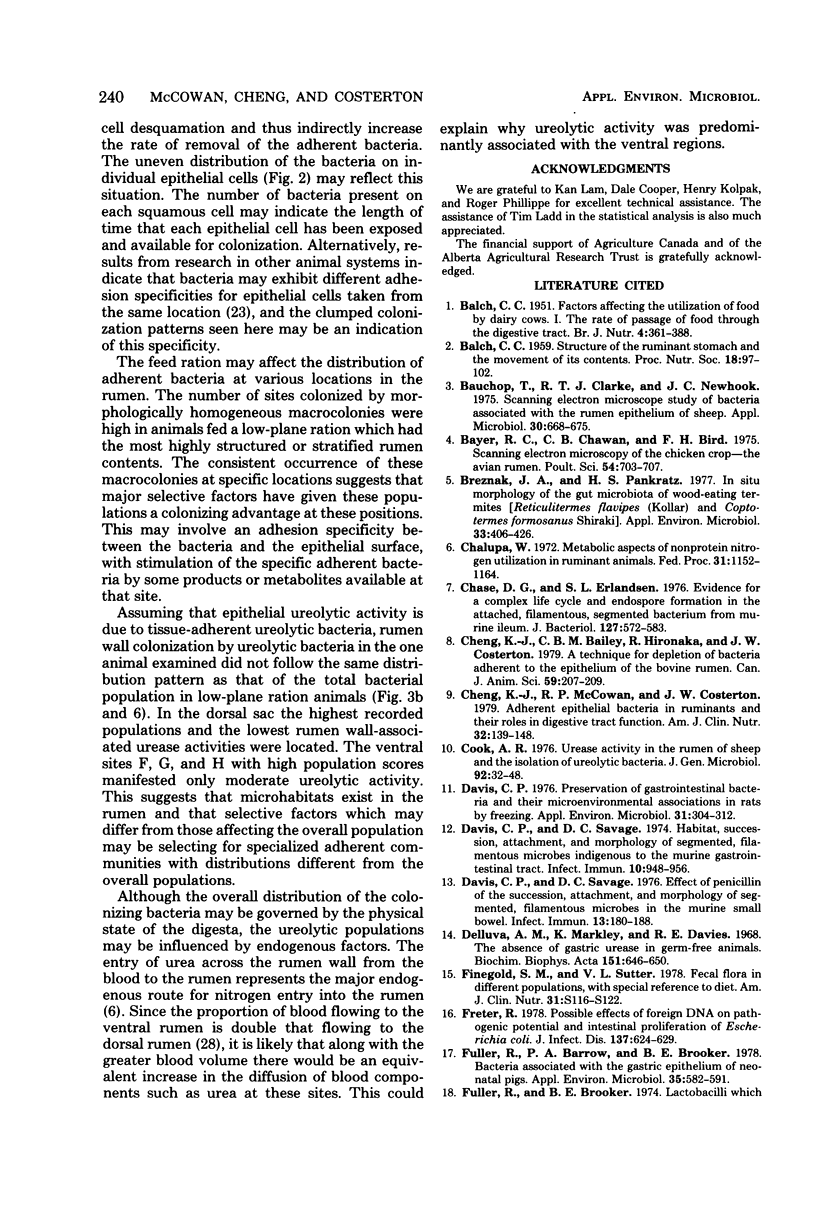
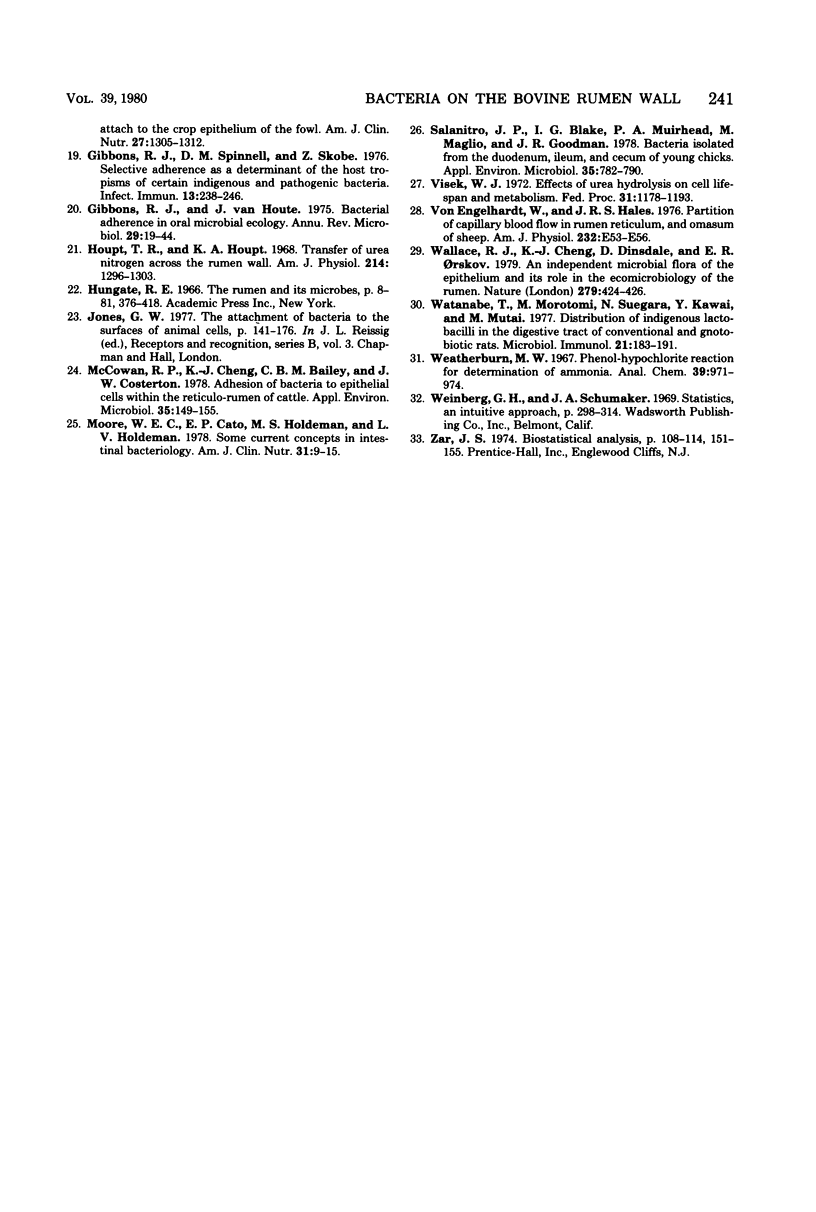
Images in this article
Selected References
These references are in PubMed. This may not be the complete list of references from this article.
- BALCH C. C. Factors affecting the utilization of food by dairy cows; the rate of passage of food through the digestive tract. Br J Nutr. 1950;4(4):361–388. doi: 10.1079/bjn19500060. [DOI] [PubMed] [Google Scholar]
- BALCH C. C. Structure of the ruminant stomach and the movement of its contents. Proc Nutr Soc. 1959;18:97–102. doi: 10.1079/pns19590027. [DOI] [PubMed] [Google Scholar]
- Bauchop T., Clarke R. T., Newhook J. C. Scanning electron microscope study of bacteria associated with the rumen epithelium of sheep. Appl Microbiol. 1975 Oct;30(4):668–675. doi: 10.1128/am.30.4.668-675.1975. [DOI] [PMC free article] [PubMed] [Google Scholar]
- Bayer R. C., Chawan C. B., Bird F. H. Scanning electron microscopy of the chicken crop--the avian rumen? Poult Sci. 1975 May;54(3):703–707. doi: 10.3382/ps.0540703. [DOI] [PubMed] [Google Scholar]
- Breznak J. A., Pankratz H. S. In situ morphology of the gut microbiota of wood-eating termites [Reticulitermes flavipes (Kollar) and Coptotermes formosanus Shiraki]. Appl Environ Microbiol. 1977 Feb;33(2):406–426. doi: 10.1128/aem.33.2.406-426.1977. [DOI] [PMC free article] [PubMed] [Google Scholar]
- Chalupa W. Metabolic aspects of nonprotein nitrogen utilization in ruminant animals. Fed Proc. 1972 May-Jun;31(3):1152–1164. [PubMed] [Google Scholar]
- Chase D. G., Erlandsen S. L. Evidence for a complex life cycle and endospore formation in the attached, filamentous, segmented bacterium from murine ileum. J Bacteriol. 1976 Jul;127(1):572–583. doi: 10.1128/jb.127.1.572-583.1976. [DOI] [PMC free article] [PubMed] [Google Scholar]
- Cheng K. J., McCowan R. P., Costerton J. W. Adherent epithelial bacteria in ruminants and their roles in digestive tract function. Am J Clin Nutr. 1979 Jan;32(1):139–148. doi: 10.1093/ajcn/32.1.139. [DOI] [PubMed] [Google Scholar]
- Cook A. R. Urease activity in the rumen of sheep and the isolation of ureolytic bacteria. J Gen Microbiol. 1976 Jan;92(1):32–48. doi: 10.1099/00221287-92-1-32. [DOI] [PubMed] [Google Scholar]
- Davis C. P. Preservation of gastrointestinal bacteria and their microenvironmental associations in rats by freezing. Appl Environ Microbiol. 1976 Feb;31(2):304–312. doi: 10.1128/aem.31.2.304-312.1976. [DOI] [PMC free article] [PubMed] [Google Scholar]
- Davis C. P., Savage D. C. Effect of penicillin on the succession, attachment, and morphology of segmented, filamentous microbes in the murine small bowel. Infect Immun. 1976 Jan;13(1):180–188. doi: 10.1128/iai.13.1.180-188.1976. [DOI] [PMC free article] [PubMed] [Google Scholar]
- Davis C. P., Savage D. C. Habitat, succession, attachment, and morphology of segmented, filamentous microbes indigenous to the murine gastrointestinal tract. Infect Immun. 1974 Oct;10(4):948–956. doi: 10.1128/iai.10.4.948-956.1974. [DOI] [PMC free article] [PubMed] [Google Scholar]
- Delluva A. M., Markley K., Davies R. E. The absence of gastric urease in germ-free animals. Biochim Biophys Acta. 1968 Mar 25;151(3):646–650. doi: 10.1016/0005-2744(68)90011-9. [DOI] [PubMed] [Google Scholar]
- Finegold S. M., Sutter V. L. Fecal flora in different populations, with special reference to diet. Am J Clin Nutr. 1978 Oct;31(10 Suppl):S116–S122. doi: 10.1093/ajcn/31.10.S116. [DOI] [PubMed] [Google Scholar]
- Freter R. Possible effects of foreign DNA on pathogenic potential and intestinal proliferation of Escherichia coli. J Infect Dis. 1978 May;137(5):624–629. doi: 10.1093/infdis/137.5.624. [DOI] [PubMed] [Google Scholar]
- Fuller R., Barrow P. A., Brooker B. E. Bacteria associated with the gastric epithelium of neonatal pigs. Appl Environ Microbiol. 1978 Mar;35(3):582–591. doi: 10.1128/aem.35.3.582-591.1978. [DOI] [PMC free article] [PubMed] [Google Scholar]
- Fuller R., Brooker B. E. Lactobacilli which attach to the crop epithelium of the fowl. Am J Clin Nutr. 1974 Nov;27(11):1305–1312. doi: 10.1093/ajcn/27.11.1305. [DOI] [PubMed] [Google Scholar]
- Gibbons R. J., Houte J. V. Bacterial adherence in oral microbial ecology. Annu Rev Microbiol. 1975;29:19–44. doi: 10.1146/annurev.mi.29.100175.000315. [DOI] [PubMed] [Google Scholar]
- Gibbons R. J., Spinell D. M., Skobe Z. Selective adherence as a determinant of the host tropisms of certain indigenous and pathogenic bacteria. Infect Immun. 1976 Jan;13(1):238–246. doi: 10.1128/iai.13.1.238-246.1976. [DOI] [PMC free article] [PubMed] [Google Scholar]
- Houpt T. R., Houpt K. A. Transfer of urea nitrogen across the rumen wall. Am J Physiol. 1968 Jun;214(6):1296–1303. doi: 10.1152/ajplegacy.1968.214.6.1296. [DOI] [PubMed] [Google Scholar]
- McCowan R. P., Cheng K. J., Bailey C. B., Costerton J. W. Adhesion of bacteria to epithelial cell surfaces within the reticulo-rumen of cattle. Appl Environ Microbiol. 1978 Jan;35(1):149–155. doi: 10.1128/aem.35.1.149-155.1978. [DOI] [PMC free article] [PubMed] [Google Scholar]
- Reiser S., Szepesi B. SCOGS report on the health aspects of sucrose consumption. Am J Clin Nutr. 1978 Jan;31(1):9–11. doi: 10.1093/ajcn/31.1.9. [DOI] [PubMed] [Google Scholar]
- Salanitro J. P., Blake I. G., Muirehead P. A., Maglio M., Goodman J. R. Bacteria isolated from the duodenum, ileum, and cecum of young chicks. Appl Environ Microbiol. 1978 Apr;35(4):782–790. doi: 10.1128/aem.35.4.782-790.1978. [DOI] [PMC free article] [PubMed] [Google Scholar]
- Visek W. J. Effects of urea hydrolysis on cell life-span and metabolism. Fed Proc. 1972 May-Jun;31(3):1178–1193. [PubMed] [Google Scholar]
- Von Engelhardt W., Hales J. R. Partition of capillary blood flow in rumen, reticulum, and omasum of sheep. Am J Physiol. 1977 Jan;232(1):E53–E56. doi: 10.1152/ajpendo.1977.232.1.E53. [DOI] [PubMed] [Google Scholar]
- Wallace R. J., Cheng K. J., Dinsdale D., Orskov E. R. An independent microbial flora of the epithelium and its role in the ecomicrobiology of the rumen. Nature. 1979 May 31;279(5712):424–426. doi: 10.1038/279424a0. [DOI] [PubMed] [Google Scholar]
- Watanabe T., Morotomi M., Suegara N., Kawai Y., Mutai M. Distribution of indigenous Lactobacilli in the digestive tract of conventional and gnotobiotic rats. Microbiol Immunol. 1977;21(4):183–191. doi: 10.1111/j.1348-0421.1977.tb00280.x. [DOI] [PubMed] [Google Scholar]




